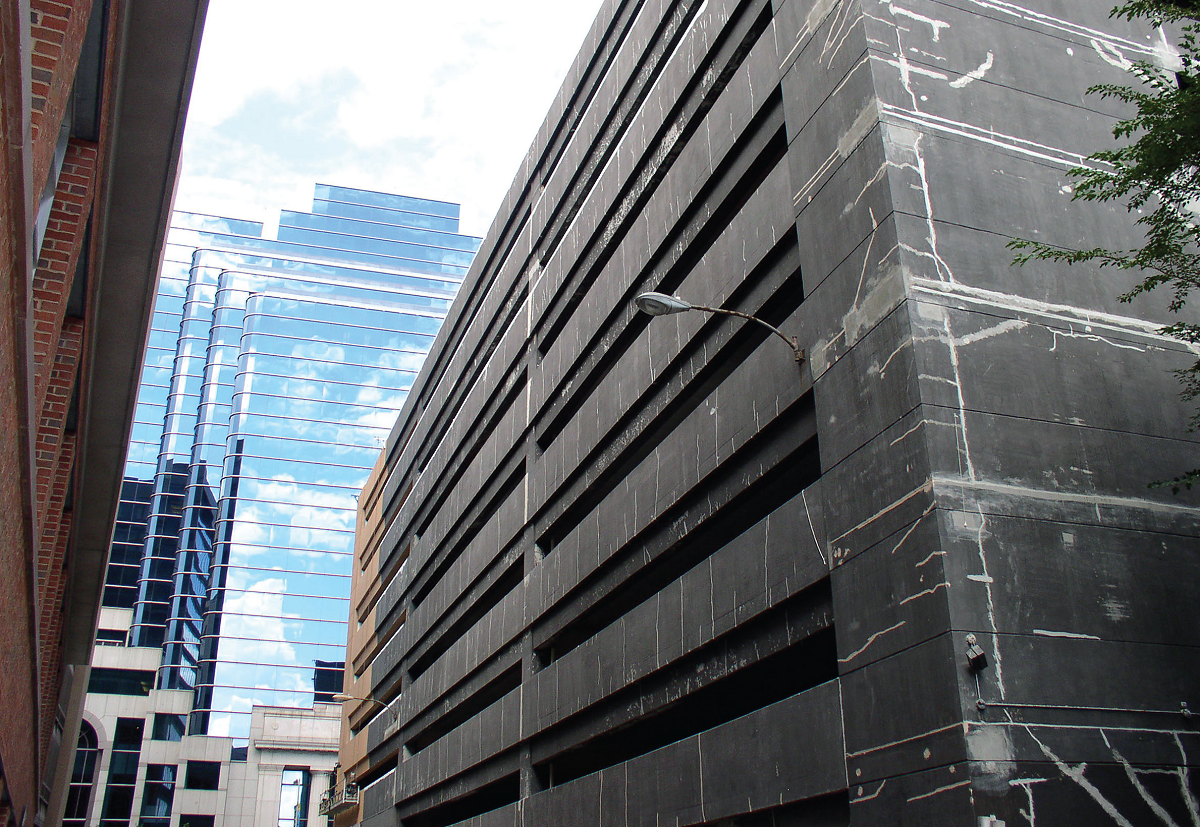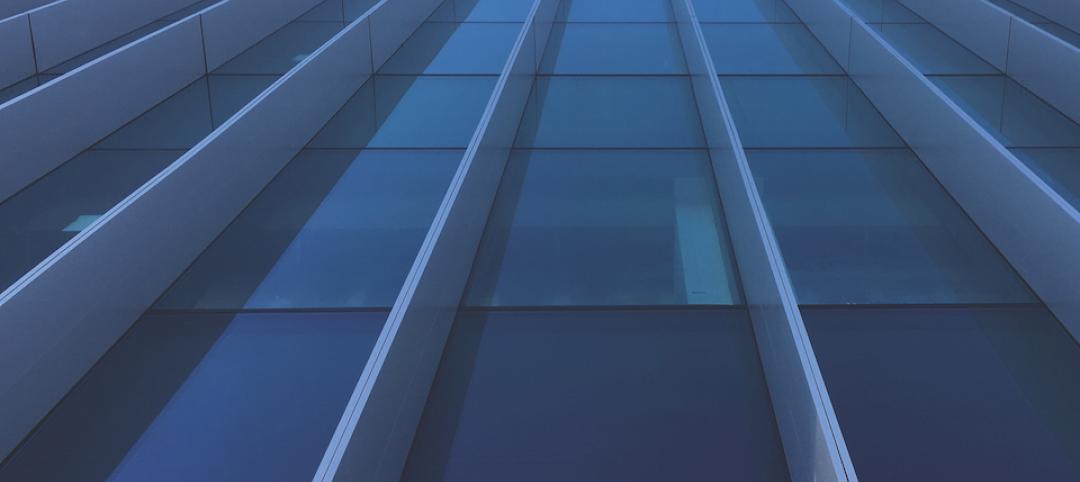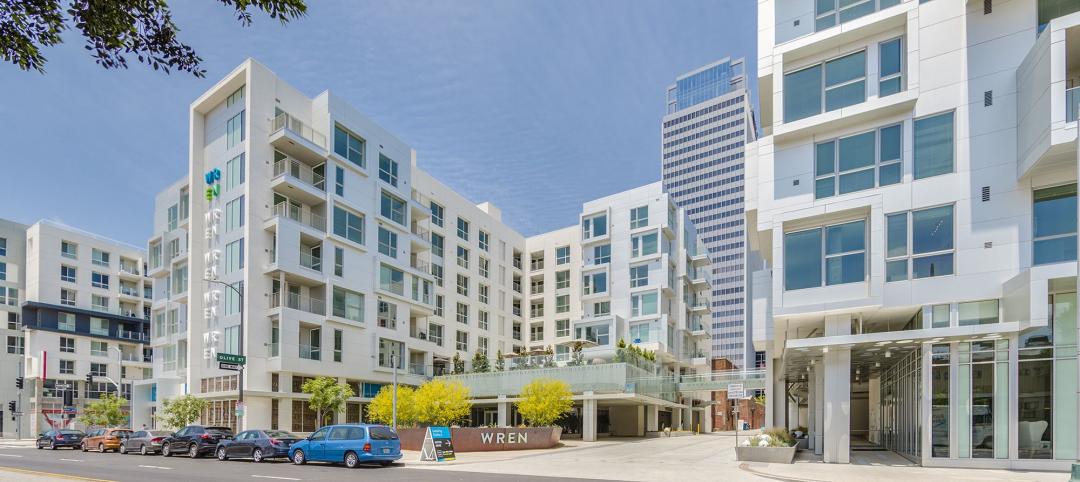We may think of the building envelope as an inanimate object, but in reality its components can be quite mobile. Building materials grow, shrink, shift, bulge, deform, and elongate in response to stresses and fluctuations in the environment, and these dimensional changes often impose strain on adjacent elements.
Where the forces of movement are not foreseen during design and construction, evidence of the struggle will emerge, in the form of cracks, spalls, displacement, broken glass, warped metal, and, eventually, breakdown of the assembly.
Failure to anticipate and allow for movement in building materials compels imparted stresses to fi nd their own path to release, which is nearly always an undesirable one. Not only are cracks unsightly, they also open pathways for moisture penetration into the building enclosure, which compounds the problem as materials swell or corrode, placing further outward pressure on adjoining components.
To design for movement in the building envelope is to identify the properties of the materials used in construction, as well as the environmental and siting conditions of the building, and to develop a design that either minimizes or allows for such movement.
After you have read and studied the text, you should be able to:
• Identify causes of dimensional changes in building envelope elements.
• Describe strategies for accommodating movement in the building enclosure.
• Distinguish among types of movement joints, including construction joints, control joints, and expansion joints.
• Explain the effects of differential movement in building envelope materials and discuss methods for permitting independent movement.
TAKE THIS FREE AIA CES COURSE AT BDCUNIVERSITY.COM
Related Stories
BD+C University Course | Aug 1, 2019
Design and construction of cannabis facilities [AIA course]
AEC firms are rushing to fill orders for cannabis facilities in the 33 states where the sale of medical marijuana is now legal. This course is worth 1.0 AIA learning units.
BD+C University Course | Jul 12, 2019
Roofing Drainage Systems [AIA course]
While the various layers of the roof assembly play a key role in keeping moisture from infiltrating into the interior, adequate weather protection also depends on the roof’s ability to drain moisture away from the building. This course is worth 1.0 AIA LU/HSW.
BD+C University Course | Jul 8, 2019
Value engineering: Where quality meets cost control [AIA course]
This course covers the history of value engineering, the benefits it provides, and the value engineering methodology.
BD+C University Course | Jul 8, 2019
Shadow box design: To vent or not to vent [AIA course]
A curtain wall shadow box is a spandrel assembly consisting of vision glass at the building exterior and an opaque infill at the interior side of the curtain wall system. This course is worth 1.0 AIA LU/HSW.
BD+C University Course | May 30, 2019
Creating real estate value with commercial office reconstruction [AIA course]
Leading owners, developers, and project teams are employing thoughtful upgrades to older buildings to create meaningful spaces that help attract and retain top tenants—and their best people.
BD+C University Course | May 10, 2019
Designing behavioral health facilities [AIA course]
Recent gun violence, the opioid epidemic, and other social issues with significant behavioral health implications underscore the need for behavioral health facilities.
BD+C University Course | Apr 24, 2019
Sandwich cladding primer [AIA course]
Learn about the differences in design, structural integrity, and insulating capacity between various types of sandwich claddings. This AIA CES course is worth 1.0 learning units.
BD+C University Course | Apr 23, 2019
Multifamily, mid-rise buildings using wood construction [AIA course]
This AIA CES course outlines the reasons for the rising popularity of wood in multifamily buildings; reviews code compliance and fire safety considerations; and discusses techniques for successful wood building designs.
BD+C University Course | Apr 17, 2019
Urban placemaking: Building equity by design [AIA course]
The U.S. is in the midst of an urban renaissance. People are returning to cities, sparking new investment and growth.
BD+C University Course | Apr 9, 2019
Storefront rehabilitation and design [AIA course]
Rehabilitation and design of storefront systems demands consideration of many factors, from thermal performance and operability to historic landmark sensitivity and appearance.



![Design and construction of cannabis facilities [AIA course] Design and construction of cannabis facilities [AIA course]](/sites/default/files/styles/list_big/public/AIAcourse.jpeg?itok=ZkXjS2TC)
![Roofing Drainage Systems [AIA course] Roofing Drainage Systems [AIA course]](/sites/default/files/styles/list_big/public/February%202019%20Roof%20Drainage%20AIA%20course.jpg?itok=RYwfJnqS)


![Creating real estate value with commercial office reconstruction [AIA Course] Creating real estate value with commercial office reconstruction [AIA Course]](/sites/default/files/styles/list_big/public/AIABDC0518_0.jpg?itok=zjrOx1W1)
![Designing behavioral health facilities [AIA course] Designing behavioral health facilities [AIA course]](/sites/default/files/styles/list_big/public/AIA_BDC0418.jpg?itok=vALIzijY)
![Sandwich cladding primer [AIA course] Sandwich cladding primer [AIA course]](/sites/default/files/styles/list_big/public/sandwich%20cladding%20course.jpg?itok=4xiFy5jk)

![Urban placemaking: Building equity by design [AIA course] Urban placemaking: Building equity by design [AIA course]](/sites/default/files/styles/list_big/public/Rudy%20Brunder%20project.jpg?itok=X0fWTMv1)





